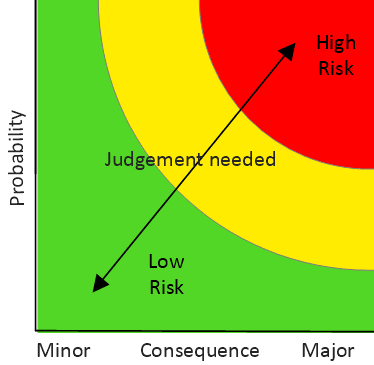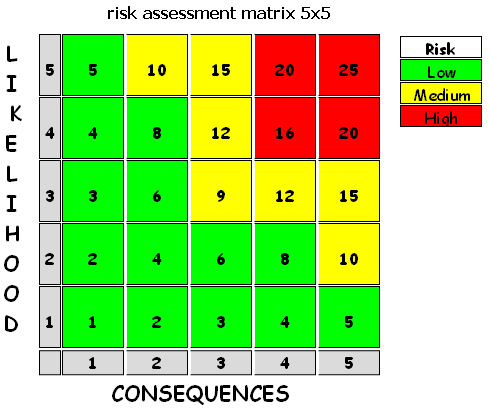|
|
What is RiskSend comments on this topic |
FREE QHSE Software Click <HERE> to Learn More |
||
QHSE Support >(Site Map) Health & Safety Guidance > Risk Assessments >
Health and Safety Risk Assessments - What is a RISK?
A risk is the likelihood that an accident will happen and the harm that could arise. Expanding this definition slightly we could say "The likelihood that a specified undesired event will occur due to the realisation of a hazard by, or during work activities or by the products and services created by work activities".
Risk can be viewed as a statistical evaluation that looks at the chance of being exposed to harm and the chance of adverse effects occurring from this exposure.
This can be expressed as;
Risk = Severity of Harm x Likelihood of occurrence.
It's important to bear-in-mind that often risk cannot be eliminated entirely. We must except this if we are continually to improve safety.
A hazard is anything that has the potential to cause harm, e.g. any situation that could contribute to an accident. Depending on the approach of the business, hazard identification may include ill health and injury, damage to property, plant, products or the environment, production losses or increased liabilities.
Hazards can be caused by many things such as chemicals, electricity, heights, water, poor maintenance, horse play, the list just goes on and on. Hazards should be eliminated wherever practicable, but this is not always the case. Where a hazard cannot be completely eliminated, then there will be some inherent level of risk.
Controlling Risk
Risk Avoidance: A business takes positive steps to avoid the risk by means such as a ceasing or substitution of the identified risks.
Risk Retention: A business makes a conscious decision to retain the identified risks and any subsequent financial losses. It is however possible that the risk is retained without the explicit knowledge of the business. When these unidentified risks occur it may lead to both financial and legal implications as well as damaging the business reputation.
Risk Rating - The 5x5 matrix is one of the most popular methods for evaluating risk. This method scores the likelihood and severity from 1 to 5 and then multiplies the two together to give an overall risk rating. For example, for likelihood a score of 1 maybe viewed as highly unlikely and a score of 5 highly probable. For severity, a score of 1 maybe viewed as no injury whereas a score 5 may indicate a fatality. Scores between 1 and 5 would then be given an suitable weighting. A Simpler 3x3 and 4x4 matrix's are also widely used within the safety management systems of many organisations.
Help file v2.276.407 : QHSE Support - Website On Safe Lines
onsafelines.com QHSE Software 2025 : Webmaster: Brian G. Welch MSc(QHSE), NVQ4(OH&S), CMIOSH




